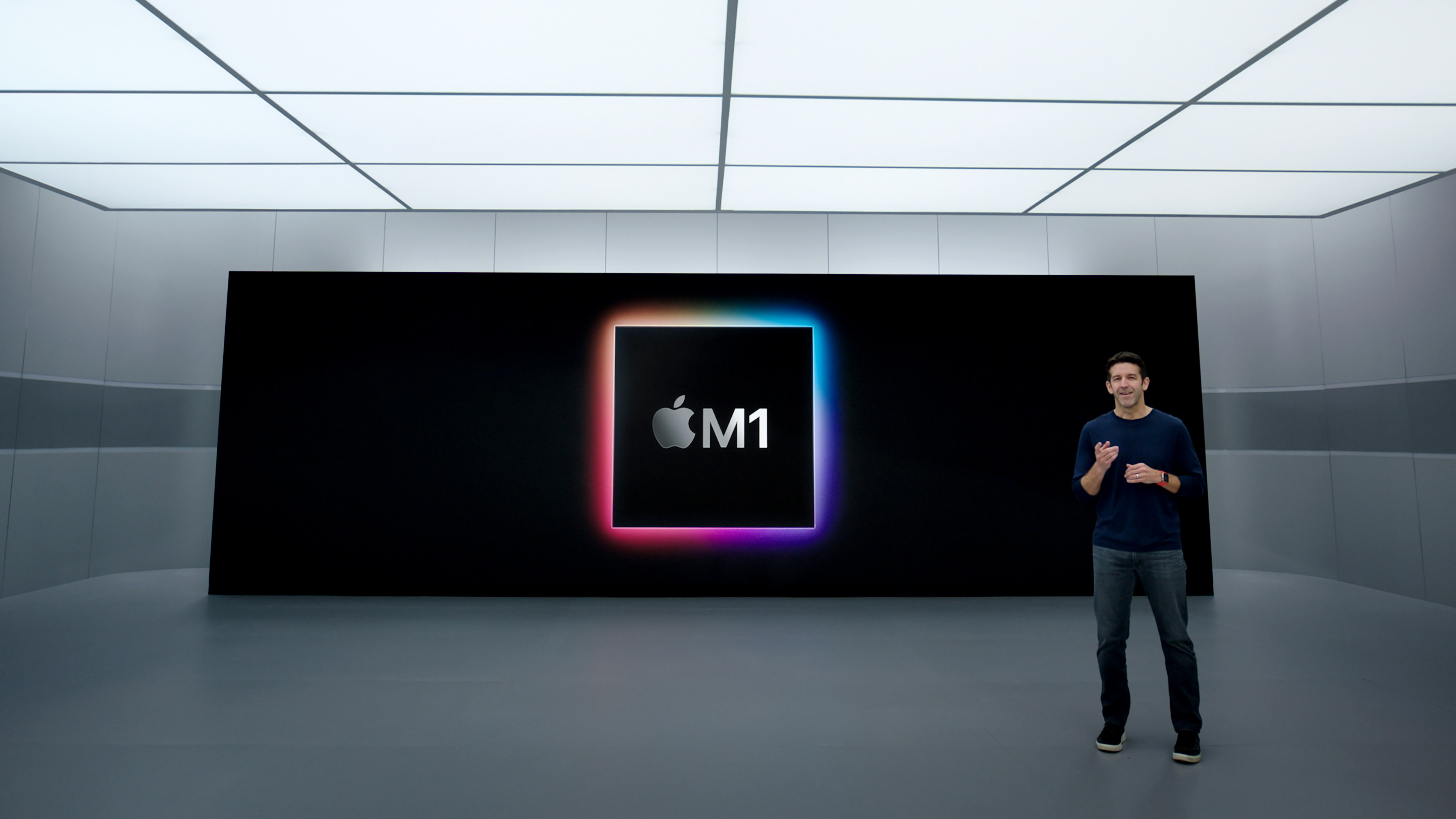When the third minute of Apple’s first product event of 2021 ticked over and they had already made 3 announcements we knew it was going to be a packed one. In a tight single hour this week, Apple launched a ton of new product including AirTags, new Apple Card family sharing, a new Apple TV, a new set of colorful iMacs, and a purple iPhone 12 shade.
Of the new devices announced, though, Apple’s new 12.9” iPad Pro is the most interesting from a market positioning perspective.
This week I got a chance to speak to Apple Senior Vice President of Worldwide Marketing Greg Joswiak and Senior Vice President of Hardware Engineering John Ternus about this latest version of the iPad Pro and its place in the working universe of computing professionals.
In many ways, this new iPad Pro is the equivalent of a sprinter being lengths ahead going into the last lap and just turning on the afterburners to put a undebatable distance between themselves and the rest of the pack. Last year’s model is still one of the best computers you can buy, with a densely packed offering of powerful computing tools, battery performance and portability. And this year gets upgrades in the M1 processor, RAM, storage speed, Thunderbolt connection, 5G radio, new ultra wide front camera and its Liquid Retina XDR display.
This is a major bump even while the 2020 iPad Pro still dominates the field. And at the center of that is the display.
Apple has essentially ported its enormously good $5,000 Pro Display XDR down to a 12.9” touch version, with some slight improvements. But the specs are flat out incredible. 1,000 nit brightness peaking at 1,600 nits in HDR with 2,500 full array local dimming zones — compared to the Pro Display XDR’s 576 in a much larger scale.
Given that this year’s first product launch from Apple was virtual, the media again got no immediate hands on with the new devices introduced, including iPad Pro. This means that I have not yet seen the XDR display in action. Unfortunately, these specs are so good that estimating them without having seen the screen yet is akin to trying to visualize “a trillion” in your head. It’s intellectually possible but not really practical.
It’s brighter than any Mac or iOS device not the market and could be a big game changing device for professionals working in HDR video and photography. But even still, this is a major investment to ship a micro-LED display in the millions or tens of millions of units with more density and brightness than any other display on the market.
I ask both of them why there’s a need to do this doubling down on what is already one of the best portable displays ever made — if not one of the best displays period.

“We’ve always tried to have the best display,” says Ternus. “We’re going from the best display on any device like this and making it even better, because that’s what we do and that’s why we, we love coming to work every day is to take that next big step.
“[With the] Pro Display XDR if you remember one thing we talked about was being able to have this display and this capability in more places in the work stream. Because traditionally there was just this one super expensive reference monitor at the end of the line. This is like the next extreme of that now you don’t even have to be in the studio anymore you can take it with you on the go and you can have that capability so from a, from a creative pro standpoint we think this is going to be huge.”
In my use of the Pro Display and my conversations with professionals about it one of the the common themes that I’ve heard is the reduction in overall workload due to the multiple points in the flow where color and image can be managed accurately to spec now. The general system in place puts a reference monitor very late in the production stage which can often lead to expensive and time consuming re-rendering or new color passes. Adding the Liquid Retina XDR display into the mix at an extremely low price point means that a lot more plot points on the production line suddenly get a lot closer to the right curve.
One of the stronger answers on the ‘why the aggressive spec bump’ question comes later in our discussion but is worth mentioning in this context. The point, Joswiak says, is to offer headroom. Headroom for users and headroom for developers.
“One of the things that iPad Pro has done as John [Ternus] has talked about is push the envelope. And by pushing the envelope that has created this space for developers to come in and fill it. When we created the very first iPad Pro, there was no Photoshop,” Joswiak notes. “There was no creative apps that could immediately use it. But now there’s so many you can’t count. Because we created that capability, we created that performance — and, by the way sold a fairly massive number of them — which is a pretty good combination for developers to then come in and say, I can take advantage of that. There’s enough customers here and there’s enough performance. I know how to use that. And that’s the same thing we do with each generation. We create more headroom to performance that developers will figure out how to use.
“The customer is in a great spot because they know they’re buying something that’s got some headroom and developers love it.”

The iPad Pro is now powered by the M1 chip — a move away from the A-series naming. And that processor part is identical (given similar memory configurations) to the one found in the iMac announced this week and MacBooks launched earlier this year.
“It’s the same part, it’s M1,” says Ternus. “iPad Pro has always had the best Apple silicon we make.”
“How crazy is it that you can take a chip that’s in a desktop, and drop it into an iPad,” says Joswiak. “I mean it’s just incredible to have that kind of performance at such amazing power efficiency. And then have all the technologies that come with it. To have the neural engine and ISP and Thunderbolt and all these amazing things that come with it, it’s just miles beyond what anybody else is doing.”
As the M1 was rolling out and I began running my testing, the power per watt aspects really became the story. That really is the big differentiator for M1. For decades, laptop users have been accustomed to saving any heavy or intense workloads for the times when their machines were plugged in due to power consumption. M1 is in the process of resetting those expectations for desktop class processors. In fact, Apple is offering not only the most powerful CPUs but also the most power-efficient CPUs on the market. And it’s doing it in a $700 Mac Mini, a $1,700 iMac and a $1,100 iPad Pro at the same time. It’s a pretty ridiculous display of stunting, but it’s also the product of more than a decade of work building its own architecture and silicon.
“Your battery life is defined by the capacity of your battery and the efficiency of your system right? So we’re always pushing really really hard on the system efficiency and obviously with M1, the team’s done a tremendous job with that. But the display as well. We designed a new mini LED for this display, focusing on efficiency and on package size, obviously, to really to be able to make sure that it could fit into the iPad experience with the iPad experience’s good battery life.
“We weren’t going to compromise on that,” says Ternus.
One of the marquee features of the new iPad Pro is its 12MP ultra-wide camera with Center Stage. An auto-centering and cropping video feature designed to make FaceTime calling more human-centric, literally. It finds humans in the frame and centers their faces, keeping them in the frame even if they move, standing and stretching or leaning to the side. It also includes additional people in the frame automatically if they enter the range of the new ultra-wide 12MP front-facing camera. And yes, it also works with other apps like Zoom and Webex and there will be an API for it.
I’ve gotten to see it in action a bit more and I can say with surety that this will become an industry standard implementation of this kind of subject focusing. The crop mechanic is handled with taste, taking on the characteristics of a smooth zoom pulled by a steady hand rather than an abrupt cut to a smaller, closer framing. It really is like watching a TV show directed by an invisible machine learning engine.
“This is one of the examples of some of our favorite stuff to do because of the way it marries the hardware and software right,” Ternus says. “So, sure it’s the camera but it’s also the SOC and and the algorithms associated with detecting the person and panning and zooming. There’s the kind of the taste aspect, right? Which is; how do we make something that feels good it doesn’t move too fast and doesn’t move too slow. That’s a lot of talented, creative people coming together and trying to find the thing that makes it Apple like.”

It also goes a long way to making the awkward horizontal camera placement when using the iPad Pro with Magic Keyboard. This has been a big drawback for using the iPad Pro as a portable video conferencing tool, something we’ve all been doing a lot of lately. I ask Ternus whether Center Stage was designed to mitigate this placement.
“Well, you can use iPad in any orientation right? So you’re going to have different experiences based on how you’re using it. But what’s amazing about this is that we can keep correcting the frame. What’s been really cool is that we’ve all been sitting around in these meetings all day long on video conferencing and it’s just nice to get up. This experience of just being able to stand up and kind of stretch and move around the room without walking away from the camera has been just absolutely game changing, it’s really cool.”
It’s worth noting that several other video sharing devices like the Portal and some video software like Teams already offer cropping-type follow features, but the user experience is everything when you’re shipping software like this to millions of people at once. It will be interesting to see how Center Stage stacks up agains the competition when we see it live.
With the ongoing chatter about how the iPad Pro and Mac are converging from a feature-set perspective, I ask how they would you characterize an iPad Pro vs. a MacBook buyer? Joswiak is quick to respond to this one.
“This is my favorite question because you know, you have one camp of people who believe that the iPad and the Mac are at war with one another right it’s one or the other to the death. And then you have others who are like, no, they’re bringing them together — they’re forcing them into one single platform and there’s a grand conspiracy here,” he says.
“They are at opposite ends of a thought spectrum and the reality is that neither is correct. We pride ourselves in the fact that we work really, really, really hard to have the best products in the respective categories. The Mac is the best personal computer, it just is. Customer satisfaction would indicate that is the case, by a longshot.”
Joswiak points out that the whole PC category is growing, which he says is nice to see. But he points out that Macs are way outgrowing PCs and doing ‘quite well’. He also notes that the iPad business is still outgrowing the tablets category (while still refusing to label the iPad a tablet).
“And it’s also the case that it’s not an ‘either or’. The majority of our Mac customers have an iPad. That’s an awesome thing. They don’t have it because they’re replacing their Mac, it’s because they use the right tool at the right time.
What’s very cool about what [Ternus] and his team have done with iPad Pro is that they’ve created something where that’s still the case for creative professionals too — the hardest to please audience. They’ve given them a tool where they can be equally at home using the Mac for their professional making money with it kind of work, and now they can pick up an iPad Pro — and they have been for multiple generations now and do things that, again, are part of how they make money, part of their creative workflow flow,” says Joswiak. “And that test is exciting. it isn’t one or the other, both of them have a role for these people.”
Since converting over to an iPad Pro as my only portable computer, I’ve been thinking a lot about the multimodal aspects of professional work. And, clearly, Apple has as well given its launch of a Pro Workflows team back in 2018. Workflows have changed massively over the last decade, and obviously the iPhone and an iPad, with their popularization of the direct manipulation paradigm, have had everything to do with that. In the current world we’re in, we’re way past ‘what is this new thing’, and we’re even way past ‘oh cool, this feels normal’ and we’re well into ‘this feels vital, it feels necessary.’
Contrary to some people’s beliefs, we’re never thinking about what we should not do on an iPad because we don’t want to encroach on Mac or vice versa,” says Ternus. “Our focus is, what is the best way? What is the best iPad we can make what are the best Macs we can make. Some people are going to work across both of them, some people will kind of lean towards one because it better suits their needs and that’s, that’s all good.
If you follow along, you’ll know that Apple studiously refuses to enter into the iPad vs. Mac debate — and in fact likes to place the iPad in a special place in the market that exists unchallenged. Joswiak often says that he doesn’t even like to say the word tablet.
“There’s iPads and tablets, and tablets aren’t very good. iPads are great,” Joswiak says. “We’re always pushing the boundaries with iPad Pro, and that’s what you want leaders to do. Leaders are the ones that push the boundaries leaders are the ones that take this further than has ever been taken before and the XDR display is a great example of that. Who else would you expect to do that other than us. And then once you see it, and once you use it, you won’t wonder, you’ll be glad we did.”
Image Credits: Apple








